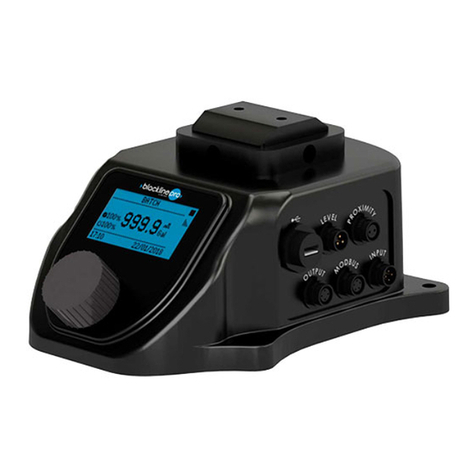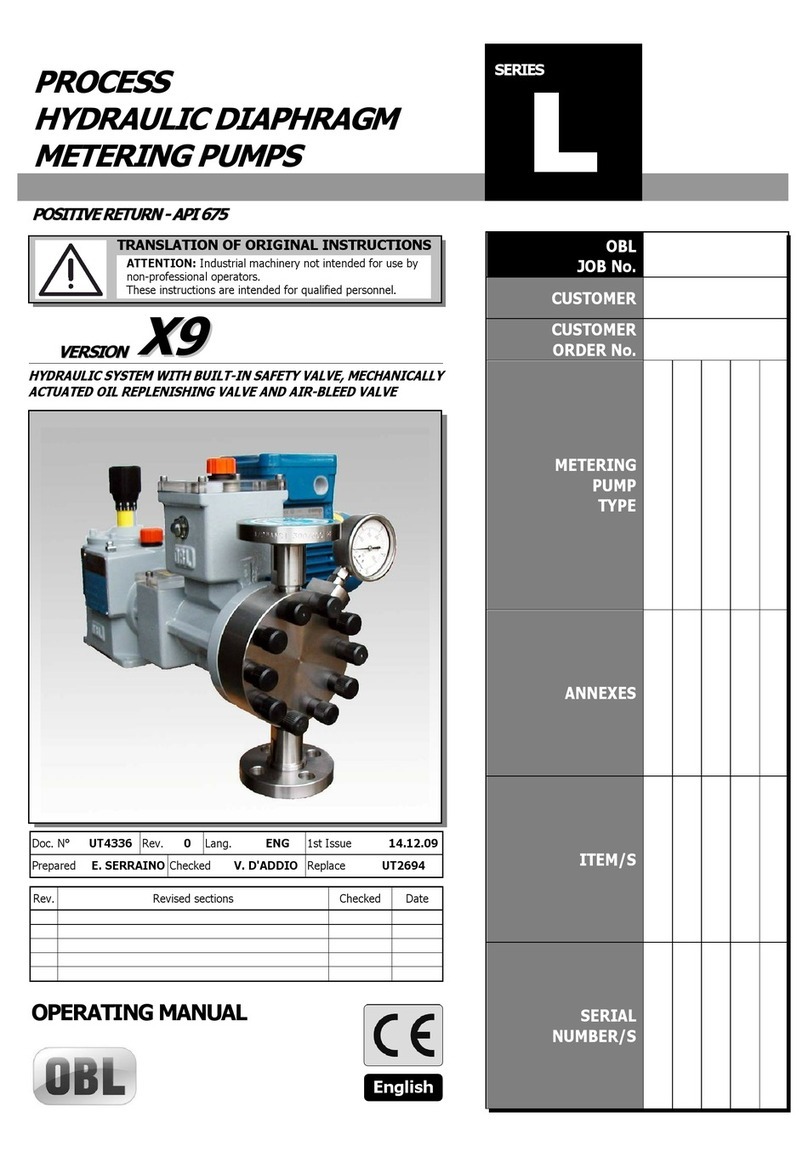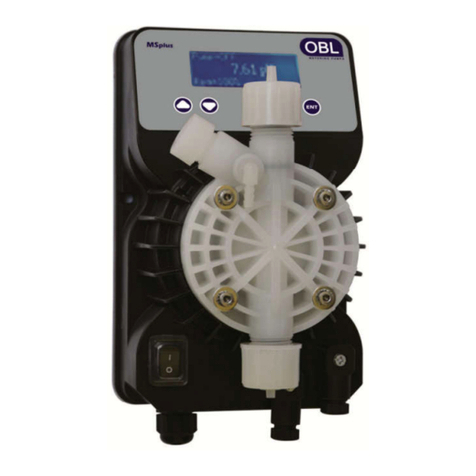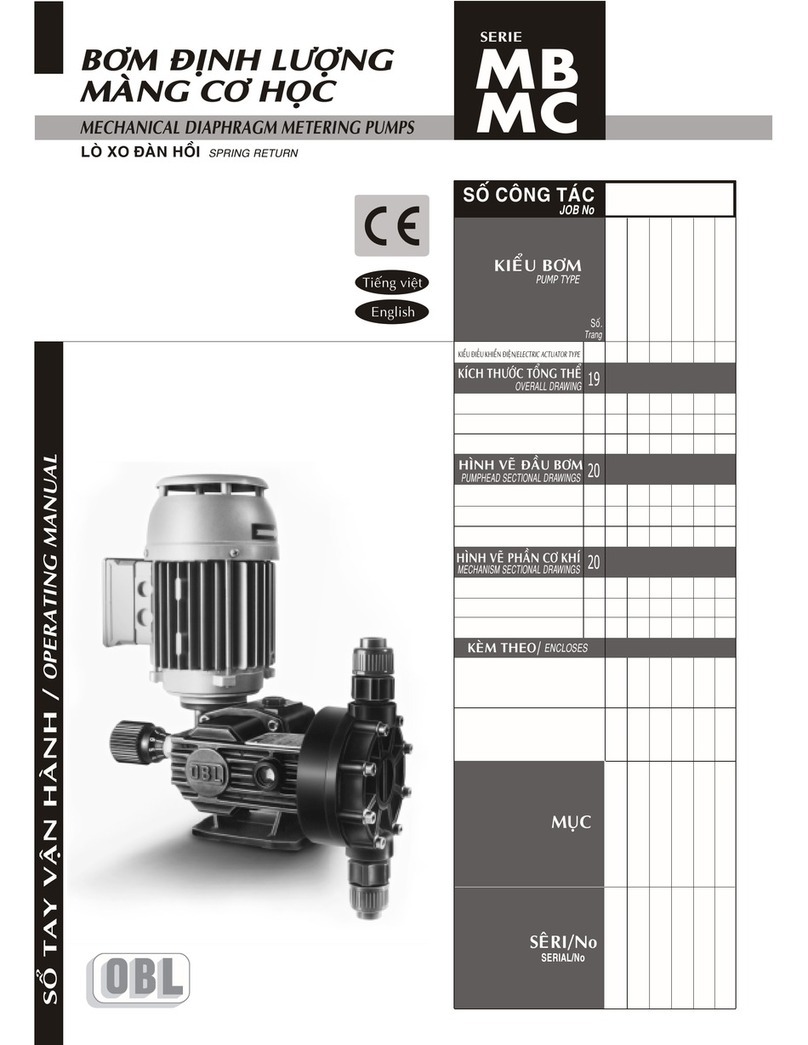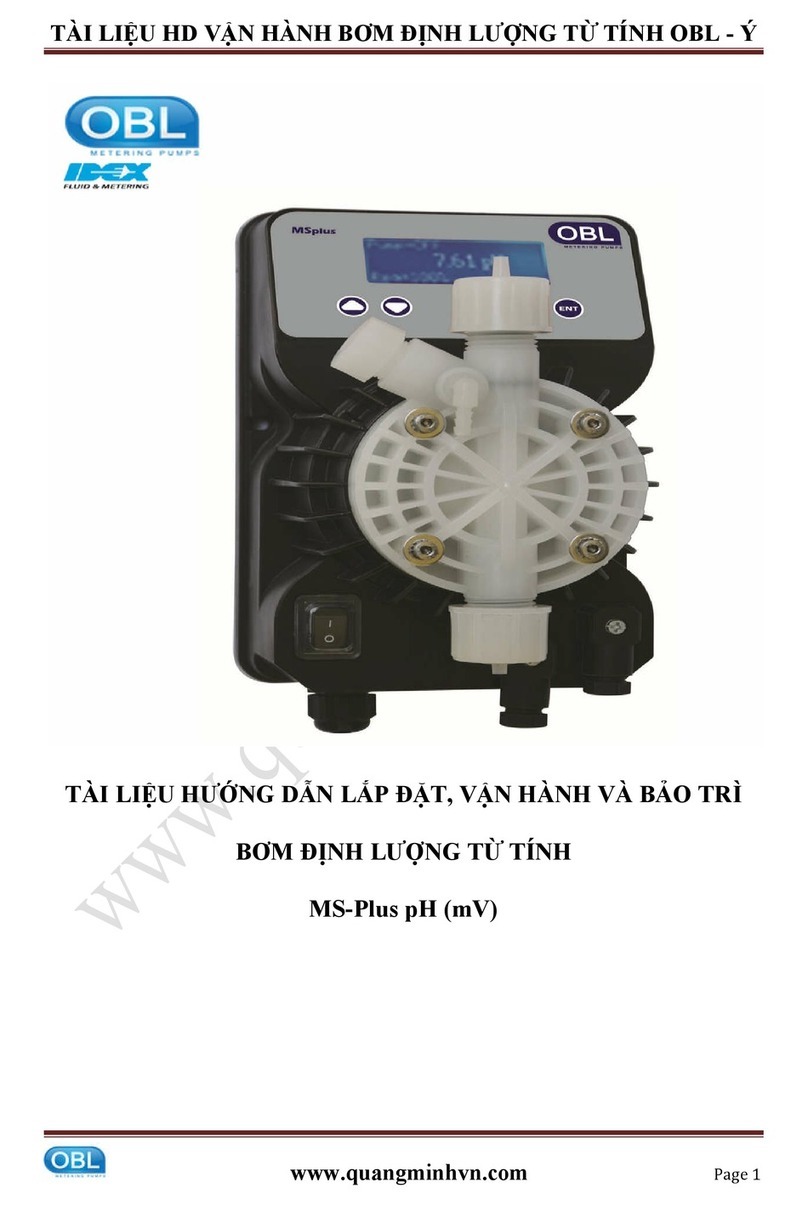INSTALLAZIONE
INSTALLATION
2
3
•Prevedere sufficiente spazio per poter controllare e smontare
la pompa in particolare dal lato idraulico
ed in corrispondenza della regolazione
(fig. 6).
•Se la pompa deve essere installata
all’aperto è consigliabile una adeguata
tettoia di protezione, soprattutto se la stes-
sa è equipaggiata con servocomandi o
altri accessori delicati.
•Le testate pompanti realizzate in PP,
possono funzionare correttamente solo
con temperatura ambiente e del liquido
dosato, inferiore a 40° C.
Prevedere quindi, se necessario, un opportuno riparo dai raggi
solari e controllare la temperatura del liquido dosato.
Indicazioni per una corretta Installazione
•Provide with adequate clearance areas and safe access for
operation and maintenance, in particular
in front of the hydraulic side and of the
adjustment knob (fig. 6).
•If the pump is installed outdoors, a shel-
ter is recommended, specially when the
pump is equipped with electric actuators
or other delicate devices.
•PP pump heads can work properly only
at ambient temperature and metered liq-
uid temperatures below 40°C. If neces-
sary, provide suitable protection from sun
rays and check the temperature of the metered liquid.
Instructions for a proper installation
Fig. 6
LATO POMPA
HYDRAULIC SIDE
LATOREGOLAZIONE
ADJUSTMENT SIDE
SPAZIO DI MONTAGGIO / ASSEMBLING AREA
800 700
La tubazione di aspirazione assume un'importanza particolare
per il buon funzionamento della pompa, gli elementi da consider-
are sono:
A) Diametro interno della tubazione
Il diametro interno della tubazione è fun-
zione della portata della pompa (tabella
C).
Gli attacchi della pompa sono dimen-
sionati in eccesso per comprendere tutti
gli impieghi.
B) Lunghezza della tubazione
La lunghezza della tubazione deve
essere la più breve possibile e
comunque rispettando le dimensioni
delle tubazioni riportate nella tabella C
consigliamo:
•Altezza max 1,5 metri
•Lunghezza totale (Verticale più
orizzontale) 2,5 metri.
C) Tipo di percorso della tubazione
Per il percorso della tubazione di aspirazione seguire le indi-
cazioni illustrate dalla fig. 7
A proper installation and sizing of the suction line are of particular impor-
tance for a correct operation of the pump.
The following factors shall be taken into account:
A) Pipe inner diameter
The pipe inner diameter will be chosen as
a function of the pump flow rate
(see table C).
The pump connections are oversized, in
order to cover all applications.
B) Length of piping
Suction piping is to be as short as possi-
ble.
Following the indications of table Cit is
suggested:
• Max suction lift 1,5 metres
• Total length 2,5 metres
(upright plus horizontal)
C) Arrangement of the suction line
For the arrangement of the suction line see fig.7.
Suction lineTubazione di aspirazione
Tabella C Table C
0÷15 4x6 - - -
0÷30 6x10 - 1/4"-
0÷125 -
DN 10
3/8" Ø16
0÷155 -
DN 15
1/2" Ø20
1/2" ANSI
0÷260 -
DN 20
3/4" Ø25
3/4" ANSI
0÷420 -
DN 25
1" Ø32
1" ANSI
Dimensioni delle tubazioni di aspirazione in funzione
della portata.
Relationship between flow rate and pipe size
PORTATA
FLOW RATE
L/h
TUBAZ. CON
RACCORDI
PIPE WITH
FITTINGS
TUBAZ.
FLANGIATA
FLANGED
PIPE
TUBAZ.
FILETTATA
THREADED
PIPE
TUBAZ.PVC
INCOLLATE
PVC GLUED
PIPE
Installazione corretta
Right
Installazione corretta
Right
Fig. 7
Errato
Pericolo di intasamento delle
valvole della pompa
Wrong
Risk of clogging of pump valves
Errato
Nel tratto più alto della
tubazione la vena del fluido
si interrompe
Wrong
In the highest point of the piping
the fluid vein breaks VALVOLA DI FONDO FILTRO
FILTER FOOT VALVE



















